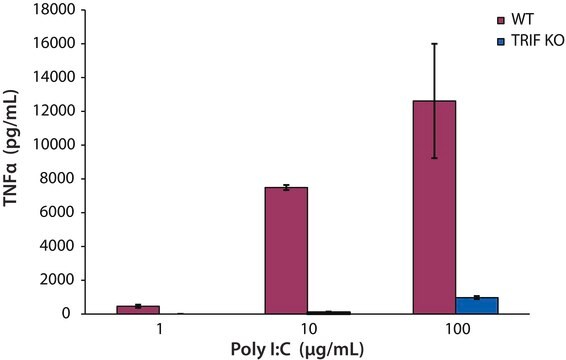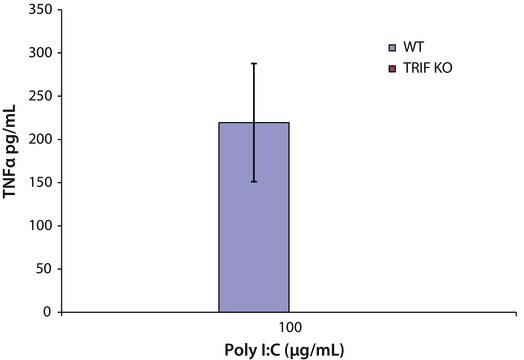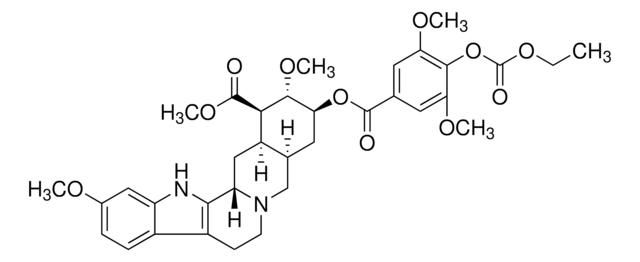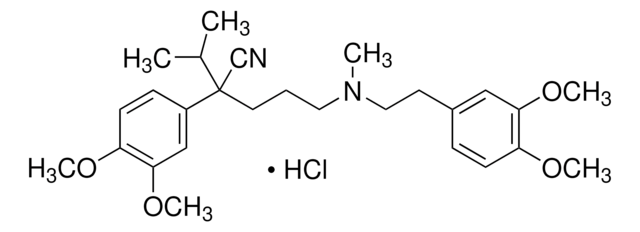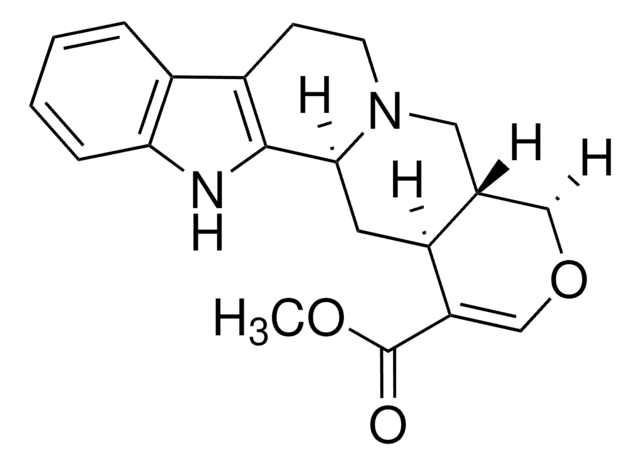R0875
Reserpine
Synonyme(s) :
(3β, 16β, 17α, 18β, 20α)-11,17-Dimethoxy-18-[(3,4,5-trimethoxybenzoyl)oxy]yohimban-16-carboxylic acid methyl ester
About This Item
Produits recommandés
Niveau de qualité
Pf
~265 °C (dec.)
Chaîne SMILES
CO[C@H]1[C@@H](C[C@@H]2CN3CCc4c([nH]c5cc(OC)ccc45)[C@H]3C[C@@H]2[C@@H]1C(=O)OC)OC(=O)c6cc(OC)c(OC)c(OC)c6
InChI
1S/C33H40N2O9/c1-38-19-7-8-20-21-9-10-35-16-18-13-27(44-32(36)17-11-25(39-2)30(41-4)26(12-17)40-3)31(42-5)28(33(37)43-6)22(18)15-24(35)29(21)34-23(20)14-19/h7-8,11-12,14,18,22,24,27-28,31,34H,9-10,13,15-16H2,1-6H3/t18-,22+,24-,27-,28+,31+/m1/s1
Clé InChI
QEVHRUUCFGRFIF-MDEJGZGSSA-N
Informations sur le gène
human ... HTR1A(3350) , HTR1B(3351) , HTR1D(3352) , HTR1E(3354) , HTR1F(3355) , HTR2A(3356) , HTR2B(3357) , HTR2C(3358) , HTR3A(3359) , HTR3B(9177) , HTR3C(170572) , HTR3D(200909) , HTR3E(285242) , HTR4(3360) , HTR5A(3361) , HTR5B(645694) , HTR6(3362) , HTR7(3363) , SLC18A2(6571)
Vous recherchez des produits similaires ? Visite Guide de comparaison des produits
Application
- to study its effect on minimal inhibitory concentration of trovafloxacin and ciprofloxacin
- inject rats, to study its effect on behavioural parameters such as locomotion and fear/anxiety
- as a lock spray reference compound in lipid profiling
Actions biochimiques/physiologiques
Caractéristiques et avantages
Mention d'avertissement
Danger
Mentions de danger
Conseils de prudence
Classification des risques
Acute Tox. 4 Oral - Carc. 2 - Repr. 1A - STOT SE 3
Organes cibles
Central nervous system
Code de la classe de stockage
6.1C - Combustible acute toxic Cat.3 / toxic compounds or compounds which causing chronic effects
Classe de danger pour l'eau (WGK)
WGK 3
Point d'éclair (°F)
Not applicable
Point d'éclair (°C)
Not applicable
Équipement de protection individuelle
dust mask type N95 (US), Eyeshields, Faceshields, Gloves
Faites votre choix parmi les versions les plus récentes :
Déjà en possession de ce produit ?
Retrouvez la documentation relative aux produits que vous avez récemment achetés dans la Bibliothèque de documents.
Les clients ont également consulté
Notre équipe de scientifiques dispose d'une expérience dans tous les secteurs de la recherche, notamment en sciences de la vie, science des matériaux, synthèse chimique, chromatographie, analyse et dans de nombreux autres domaines..
Contacter notre Service technique

